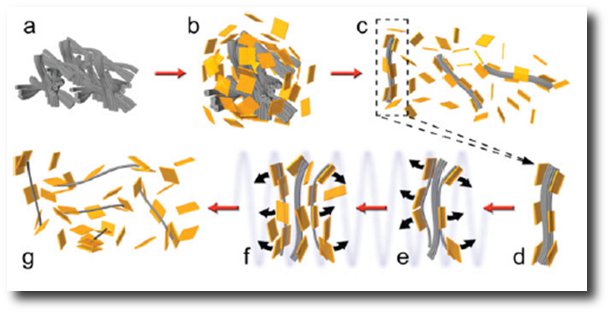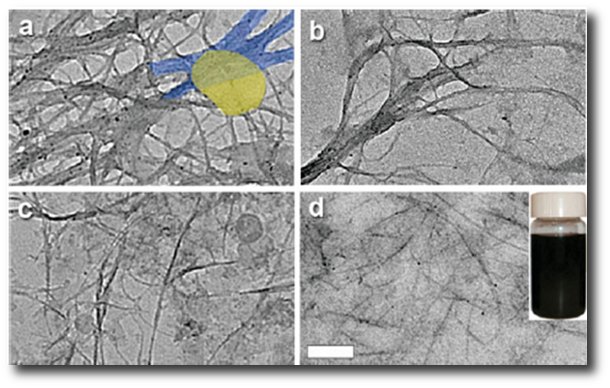Texas A&M University

Student Login
Exfoliation and Debundling of Carbon Nanotubes
A lingering hindrance to the widespread use of single-walled carbon nanotubes (SWNTs) is the absence of a robust, efficient, and innocuous method to completely debundle nanotube aggregates into an individually dispersed state. Once achieved, it is predicted that many existing and emerging technologies can benefit greatly from the exceptional mechanical, thermal and electrical properties that SWNTs possess. For example, carbon nanotubes (CNTs) are being used as highly efficient radio-frequency receivers, to create nanotransistors and nanoscale electronics to move beyond silicon-based devices, in light-harvesting cells as electrodes for fast carrier transfer, and in the area of polymer composites for controlling thermal and electrical conductivity and enhancing strength and modulus. This obstacle to dispersing SWNTs arises because, immediately following their synthesis, the tubes readily self assemble into a parallel configuration, commonly referred to as bundles or ropes, resulting in formidable tube–tube van der Waals (vdW) binding energies of 20 kBT for every nanometer of tube overlap and the inevitable formation of ‘‘insoluble’’ microscopic aggregates (see figure below).

|
Various strategies have been implemented to disperse SWNTs that are based on either the non-specific adsorption of surfactants, covalent functionalization of nanotube surfaces with steric, electrostatic, or solvent-soluble shells, or combinations thereof. These approaches have achieved varying degrees of success in terms of attaining a well-dispersed state and acquiring a high yield, yet the most efficient methods with regard to large-scale dispersion—as, for example, with covalent modification and severe or prolonged sonication treatments—produce tubes with degraded physical and electrical properties.
We have developed a straightforward colloidal approach that is easily scalable while avoiding the problem of introducing severe defects on the nanotubes through reversible electrostatic coupling of nanoplatelets to oxidized SWNTs. Under sonication, these bound nanoplatelets absorb and thus localize the dispersing energy at tube–tube interfaces within the periphery of SWNT bundles, thereby overcoming short-range vdW attractive potentials and pulling nanotube bundles apart.
|
TEM images (see figure above) show that ZrP nanoplatelets can exfoliate SWNT bundles to form a colloidal dispersion in water. The SWNTs are highly stable and remain as individual tubes even after one year. This approach is unique in that extensive surface modification of SWNTs is not required to achieve exfoliation and debundling. The ZrP nanoplatelets are essential in keeping the SWNT apart, however, in many applications ZrP nanoplatelets must be removed to obtain pure nanotubes. We found that SWNTs can be separated from the nanoplatelets by screening the electrostatic attraction through careful adjustments in ionic strength of the solution. This is achieved by adding a salt, KCL into the solution to force the SWNTs to aggregate, which can then be extracted using a centrifuge machine.
Related Publications
Dazhi Sun, W. Neil Everett, Chien-Chia Chu, and Hung-Jue Sue, “Single-Walled Carbon-Nanotube Dispersion with Electrostatically Tethered Nanoplatelets”, Small, 2009, 5, No. 23, 2692–2697.
| <<Back | Nanomaterials | Epoxy/α-ZrP Nanocomposite>> |